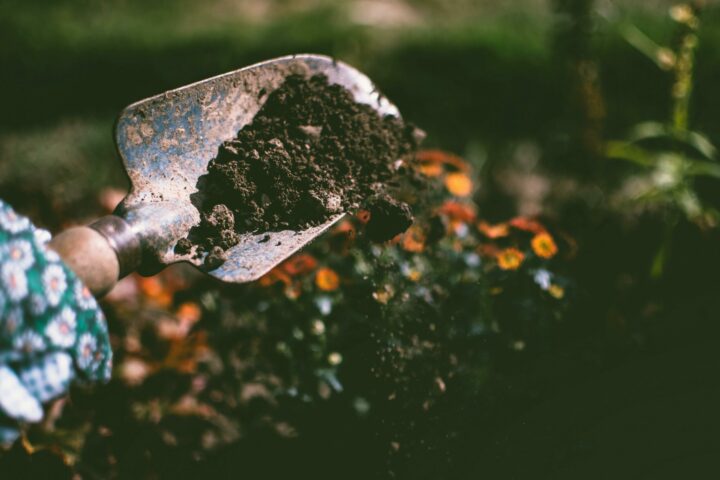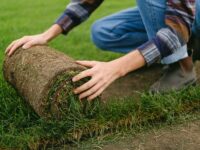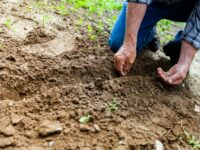The following contribution is from another author.
An irrigation system is definitely an easier and more precise way to water your plants. But you have to consider whether to snake the hose of a soaker system through your beds or opt for the precise delivery of drip irrigation. Both methods have unique benefits for providing your plants with the moisture they need.
But which one is best for you? Get all the information you need to decide below.
Evaluating Soaker Hoses for Garden Moisture
Soaker hoses are like garden hoses, except they’re made out of porous materials. So, they consister release water from these pores. They offer a simple, effective way to water your garden, especially when working with a tight budget or a smaller space.
Soaker Hose Pros
- Cost-effective compared to other watering systems
- Easy to use; just connect to any outdoor faucet
- Gentle watering method, ideal for delicate plants
- Can be snaked around plants for targeted watering
- Good for soil conservation, reducing water runoff
- Helpful for establishing moisture for new plantings
Soaker Hose Cons
- Not as long-lasting as other garden hoses
- Can be less precise, leading to water waste
- May not be suitable for large food crops that require more water
- Can be damaged easily by garden tools or UV exposure
Optimal Conditions for Soaker Hose Use
Utilize a soaker hose in a porous landscape where delicate plants or shrubs require moisture at the root level. They’re best for smaller, contained areas where you can lay the hose out in a pattern that covers the plant roots without excessive overlap or waste.
Drip Irrigation System Advantages
Drip irrigation systems provide a precise and efficient watering solution, especially beneficial for larger or more complex gardens.
Drip Tape and Drip Line Efficiency
Drip tape is a thin tubing that offers cost-effective irrigation and is less susceptible to UV damage when buried beneath the hose mulch. It’s particularly useful in row crops or raised beds.
Drip Irrigation Pros
- Highly efficient water delivery directly to plant roots
- Reduces evaporation and runoff compared to sprinkler systems
- Customizable with tiny holes for precision watering
- Minimizes weed growth by watering only rows of vegetables
- Ideal for both tree roots and dense garden areas
Drip Irrigation Cons
- Higher initial cost than soaker hoses
- More complex installation process
- Tiny holes can become clogged, requiring maintenance
- Requires careful planning around plant roots
Scenarios Favoring Drip Irrigation
Opt for drip tape if you’re looking for efficiency and precision in your garden. Drip systems are widely available at hardware stores and are the go-to choice for serious gardeners with diverse and extensive plantings.
Similarities of Soaker Hose vs Drip Irrigation
Both systems are designed to conserve water and can be camouflaged under mulch. They’re relatively easy to install and support sustainable gardening practices.
Designed to Save Water
Both soaker hoses and drip irrigation systems are designed to save water by delivering it directly to the plant’s base, reducing evaporation and runoff.
Can Be Hidden Under Mulch
Soaker hoses and drip lines can both be discreetly hidden under mulch to maintain the aesthetic of your garden while providing essential hydration.
Easy to Install
Installation is straightforward for both systems; you can easily lay them out according to your garden’s layout and connect them to a water source without specialized tools.
Require Pressure to Operate
Both soaker hoses and drip irrigation systems utilize pressure to distribute water effectively. Without adequate pressure, neither watering system can deliver moisture consistently along the length of the garden beds. Ensuring your water source can provide the necessary pressure is crucial for the operation of these irrigation lines. Balancing pressure is key to achieving efficient watering, and sometimes additional equipment like pressure regulators may be necessary.
Environmentally Friendly
Soaker hoses and drip irrigation systems offer environmentally friendly options for delivering water directly to plants’ roots. This reduces water waste and evaporation, making these systems ideal for conserving water. Additionally, by targeting the water precisely where it’s needed, these systems minimize runoff and decrease the likelihood of weed growth.
Require Monitoring
Despite their efficiency, soaker hoses and drip lines require regular monitoring to ensure they are functioning correctly. Over time, clogs can develop, or leaks may occur, necessitating periodic checks. Monitoring also helps gardeners adjust water flow to meet the changing needs of their plants, ensuring that each area of the garden receives the right amount of moisture.
Differences Between Soaker Hose vs Drip Irrigation
When deciding between a soaker hose and a drip irrigation system, understanding their differences is essential to making the best choice for your garden’s unique requirements.
Material Composition
Soaker hoses are typically made from porous materials that allow water to seep out along their entire length, while drip irrigation systems consist of plastic tubing fitted with emitters at set intervals. The difference in material composition means that soaker hoses are incompatible with certain water sources, like greywater, due to their tendency to clog more easily than drip systems.
Installation Process
Installing a soaker hose is often as simple as laying it along the garden bed and connecting it to a water source. Drip irrigation, on the other hand, involves a more complex setup with individual drip emitters or drip tape that must be placed at specific intervals and depths to cater to the plants’ watering needs, making it a potentially more time-consuming installation process.
Precision of Watering
Drip irrigation systems offer a higher precision of watering, delivering water directly to the plant’s root zone through spaced emitters. Soaker hoses provide a more general and even moisture along their length, which is less targeted but can be beneficial for densely planted garden beds where the plants’ root systems are closely intertwined.
Maintenance Considerations
Maintenance of a drip irrigation system typically involves checking for and replacing damaged emitters and flushing the lines periodically. Soaker hoses may require less frequent maintenance, but they are more susceptible to damage from external factors like sunlight and foot traffic and may degrade faster than the durable plastic of drip lines.
Adaptability
Drip irrigation systems boast superior adaptability, as they can be customized to fit a wide array of garden layouts and plant types. Soaker hoses are less flexible in this regard, as they deliver water uniformly along their length, making them less ideal for gardens with plants that have varying water requirements.
Water Efficiency
In terms of water efficiency, drip irrigation often wins, as it minimizes evaporation by delivering water at a slow rate directly to the soil. Soaker hoses, while still efficient, may lose more water to evaporation since they wet the soil surface along their entire length, especially in hot or windy conditions.
Operational Longevity
The operational longevity of drip irrigation systems typically surpasses that of soaker hoses. Drip lines, made from durable materials and with replaceable parts, can last many years with proper care. Soaker hoses, subject to wear from environmental elements and material breakdown, often have a shorter lifespan and may need to be replaced more frequently.
Cost Analysis: Soaker Hose vs Drip Irrigation
When comparing costs, soaker hoses generally offer an inexpensive start-up option, particularly attractive to first-time gardeners or those with small garden beds. Initial investments are lower due to the simplicity of the system and the lack of complex components. However, over time, the need to replace soaker hoses more frequently can increase overall expenses.
Conversely, drip irrigation systems, while potentially more costly upfront due to the precision components and layout design, can be more cost-effective in the long run. The durability and lower maintenance costs contribute to long-term savings, making them a wise investment for serious gardeners committed to the health and productivity of their garden beds.
Frequently Asked Questions
What is better, soaker hose or drip irrigation?
The better watering system between soaker hoses and drip irrigation depends on your garden’s specific needs. For deep soaking of closely spaced plants, a soaker hose might be sufficient. However, for targeted watering where plants are spaced 6 to 10 inches apart, drip irrigation may be more efficient. Your garden’s layout and watering requirements will determine the most suitable system.
Do soaker hoses need pressure reducer?
Both soaker hoses and drip lines can benefit from a pressure reducer in a garden irrigation system, especially when connected to a high-pressure water source. This is particularly true for raised beds, where excessive pressure can cause uneven watering or damage the hoses.
What is a major downside to drip irrigation?
One of the major downsides to drip irrigation is its complexity and the cost of components, which can be higher than other irrigation methods. While hardware stores typically stock a variety of drip irrigation supplies, setting up a system that effectively covers areas like flower beds or straight rows in a vegetable garden can be challenging.
Conclusion – Making the Informed Choice for Your Garden’s Hydration Needs
When deciding on the best watering system for your garden, whether it’s a lush cottage garden or a simple vegetable plot, consider the unique needs of your plants and the root zone.
A soaker hose may be perfect for areas where plants remain dry above ground, while a drip irrigation system offers precision watering that can be crucial for certain crops.
Remember, understanding how to till a garden without a tiller can also influence your irrigation choice, as soil preparation affects water penetration. Weighing the pros and cons of each system will help you maintain an efficient and thriving garden.
















